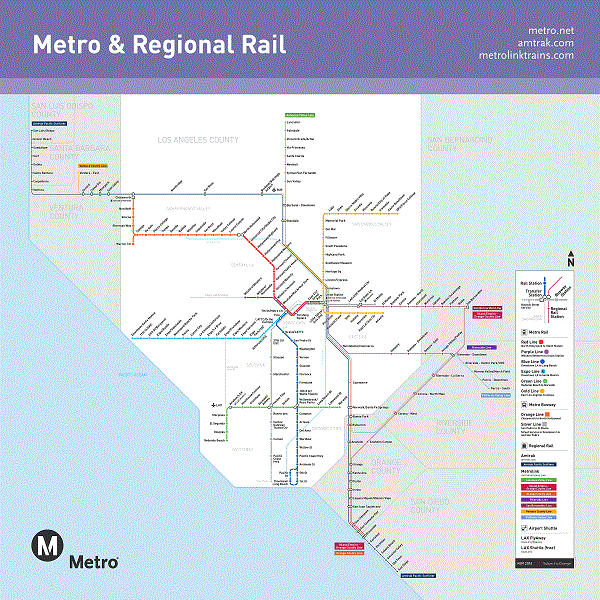When we deal with organizations, we typically act toward the people we’re connecting with in the organization based on our default ‘map’ of the organization.
It’s important to understand that – like most things – we can represent things (including organizations) using multiple maps, all equally valid – and all useful in the right context. Here are three maps of Los Angeles (topographic, freeways, rail lines):



Similarly, we usually represent organizations with different maps.
Foundationally, there is the map of the explicit power within the organization – I think of this as “who can fire who.” It’s represented by the typical hierarchical org chart. Everything in the organization intersects this map – because people want to keep their jobs or advance, and the relationships in this map will determine whether they do or not.
Next, I could map emails or calls within an organization and find out who has influence within the organization – which is often not the same as having power. I can have influence by virtue of being at the center of a dense communications node, or by virtue of being the connector who bridges multiple such nodes. Successful organizational change must take into account these networks of influence. (this map is the easiest way to track culture through an organization)
Next, I might map the flow of value within the organization – where is value created? How does it flow? Who touches the work, and does their action add value to it? This isn’t just true of organizations that deliver work in the form of physical goods – although it’s easier to visualize in those cases – it’s true of every organization. Lean management typically focuses here.
Finally, I might map the flow of information within an organization. Who gives information to who? Who gets information from who? What key decisions are supported by information – when must they be made and where and when does the information come from? Whether the organization delivers value in the form of physical objects or software or the pure manipulation of information (think lawyers) – the flow of information, it’s retention and stores within the organization are a critical way to view the organization as well.
Each is a different representation of one thing – but the map is not the territory, the map is only _a_ representation of the territory – each a useful one in and of itself, but I think to really manipulate organizations and change them, we have to be aware of all of these.
Approaches to organizational improvement may be based in one map (value for lean, etc.) but must always be aware of and interact with the others.
Let me explain.
Too often, we say we want to optimize (as an example) the flow of value (how the organization makes money), but we wind up optimizing the flow of power instead.
We can’t get away from power maps, but by making the flow of value transparent, and building consensus on what that map looks like – making sure there’s agreement among the stakeholders on this – means that the value map will at least be seriously considered.
And that, after all, is what we’re about.

Recent Comments